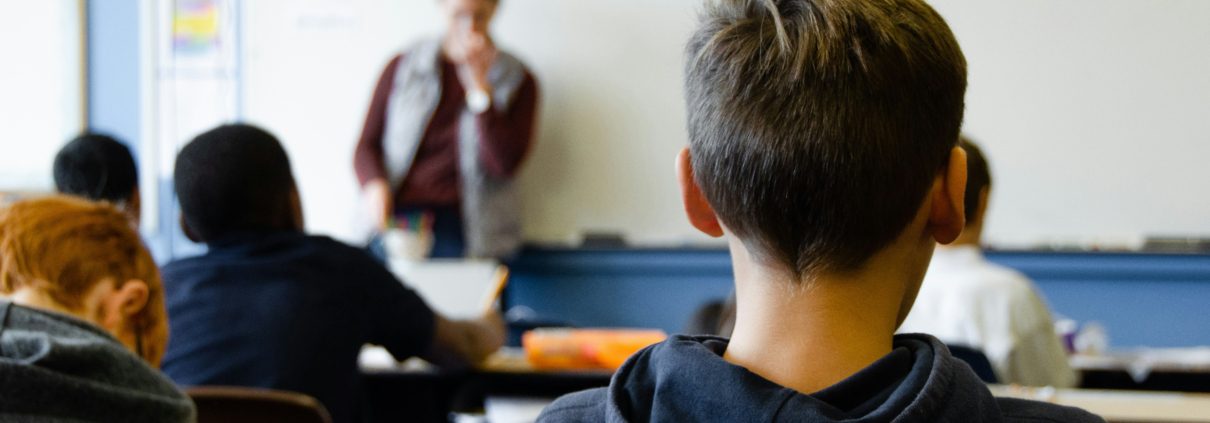Suspensions and Expulsions
Before discussing the legislative rules around suspensions and expulsions covered by the Education and Training Act 2020 (ETA), it is important to differentiate between them. Note the relevant sections in the ETA only apply to State schools (including State integrated schools).
A suspension involves removing a student from school for a period of time which expires after the earlier of seven school days or the date or time at which the suspension meeting is held and the matter is resolved.[1] Being stood-down is where a student is removed from school for up to five school days per term or ten school days per year.[2] Exclusion is where a student under the age of 16 is removed from school and required to enrol in another school. Lastly, expulsion is the removal of a student who is 16 years old or over from the school; the student may enrol at another school if they wish to carry on schooling.
Boards, principals and teachers must be fair and flexible when they deal with the misbehaviour of students or their risk to other students. This is in line with principles of natural justice; all circumstances and factors must be weighed up and considered before making any decisions.
Investigation
Following an incident regarding a student’s behaviour, a staff member or the school’s principal should investigate the matter. This aims to paint a true picture of what occurred. It is best practice to have procedures in place and to document this process; the Ministry of Education has produced an ‘incident report’ template in appendix 3 of their guidelines here.
Staff should provide students the opportunity to comment on the facts and record their responses; it is good practice to have another adult present. Before deciding to stand-down or suspend a student, ideally one of the following would be applicable: the student was caught in the act, the incident was witnessed by someone the staff believes to be credible, the student was clearly implicated by other circumstantial evidence, or the student freely admitted to being responsible.
Principal’s Decision
For a student to be stood-down or suspended, the principal must be satisfied the student’s behaviour amounted to gross misconduct or continual disobedience that is a harmful example to other school students, or risked the serious harm of other students.[3] If the behaviour does not fall into any of these categories the student may not be stood down.
Gross misconduct has been described by the High Court as “striking and reprehensible to a high degree”.[4] While continual disobedience is a firm pattern of misbehaviour. Further it would be setting a harmful or dangerous example to other students where, if the misbehaviour went unpunished, the discipline and safety standards would be undermined. Despite these, it is important for the student’s individual circumstances to be taken into account. This may also require talking to their parents.
Before making a decision, consideration should be given to the affect suspension will have on the student’s right to go to school.
Suspension or stand-down
Upon deciding to suspend a student it is the principal’s obligation to inform the student’s parents, the board and the Ministry of Education.[5] They are also obliged to take all reasonable steps to make sure the student obtains guidance and counselling under s 103 of the ETA. The student and parent needs to be given an Information for Parents pamphlet which sets out relevant information.
The Education (Stand-Down, Suspension, Exclusion and Expulsion) Rules 1999 (“the Rules”) require the principal to write a report for the board setting out the incident and why it amounts to conduct requiring suspension. The report, along with information regarding the suspension meeting, must reach the student and their parents at least 48 hours before the meeting.[6] It must take place between seven school days of the suspension. During the meeting the board determines whether to lift or extend the suspension with or without conditions; where it is more serious, they may decide to exclude or expel the student.[7]
Stand-downs have a similar process. A detailed report is not needed, though data about stand-down decisions must still be provided to the Ministry of Education. A meeting can be requested by the student or parent. There is a different pamphlet here. In both situations the student can attend school if it is appropriate or a parent requests it, provided the principal thinks it reasonable.[8]
Exclusion or expulsion
The board may decide to exclude or expel the student from school following a suspension meeting under s 81(1)(c) of the ETA. The principal may also decide to request the board reconsider their decision where a student did not comply with conditions imposed by the board; this may result in exclusion or expulsion.[9]
Upon a decision to exclude a student the parents and Ministry of Education must be informed. The principal has to try find another suitable school for the student to attend.[10] If the principal is unable to do this they must inform the Secretary (chief executive of the Ministry of Education) of the steps they undertook.[11] The Secretary can lift the exclusion, arrange the student to enrol in another school or a distance school, but must have made all reasonable attempts to consult the student, their parents and the board.[12] The Secretary can direct the board of another State school to enrol the student, but cannot direct the board of a State integrated school to enrol the student.[13]
Where a student is expelled the student’s parents and the Ministry of Education must be informed. The student should also be informed that the Ministry of Education can provide them assistance.
What about Student Discipline in Private Schools?
Private schools decide their own rules and policies in relation to discipline but must behave fairly and reasonably. The rules around suspensions, exclusions and expulsions under the ETA do not apply to private schools.
However, clause 16 in schedule 7 of the ETA sets out that where a student has been suspended or expelled from a private school the principal must provide the Chief Executive and Secretary (the Secretary) of the Ministry of Education written notice of the student’s name, address, and the day they were expelled or suspended, along with the reasons for such suspension or expulsion. The Secretary can arrange for them to be enrolled at another school after making reasonable attempts to consult the student, the student’s parents, and the board.
This article is general in nature and is not a substitute for legal advice. You should talk to a lawyer about your specific situation. Reproduction is permitted with prior approval and credit being given back to the source. Contact Kris Morrison at krismorrison@parryfield.com to request this or for any other questions.
[1] Education and Training Act 2020, section 81.
[2] Education and Training Act 2020, section 80(2).
[3] Education and Training Act 2020, section 80(1).
[4] M & Anor v S & Board of Trustees of Palmerston North Boys’ High School [2003] NZAR 705, 712 (decided 5 December 1990).
[5] Education (Stand-Down, Suspension, Exclusion and Expulsion) Rules 1999, rules 9 and 10.
[6] Education (Stand-Down, Suspension, Exclusion and Expulsion) Rules 1999, rules 15.
[7] Education and Training Act 2020, section 81.
[8] Education and Training Act 2020, section 80(3).
[9] Education and Training Act 2020, section 81(3)-(4).
[10] Education and Training Act 2020, section 81(6).
[11] Education and Training Act 2020, section 81(7).
[12] Education and Training Act 2020, section 82.
[13] Education and Training Act 2020, section 87(3).




